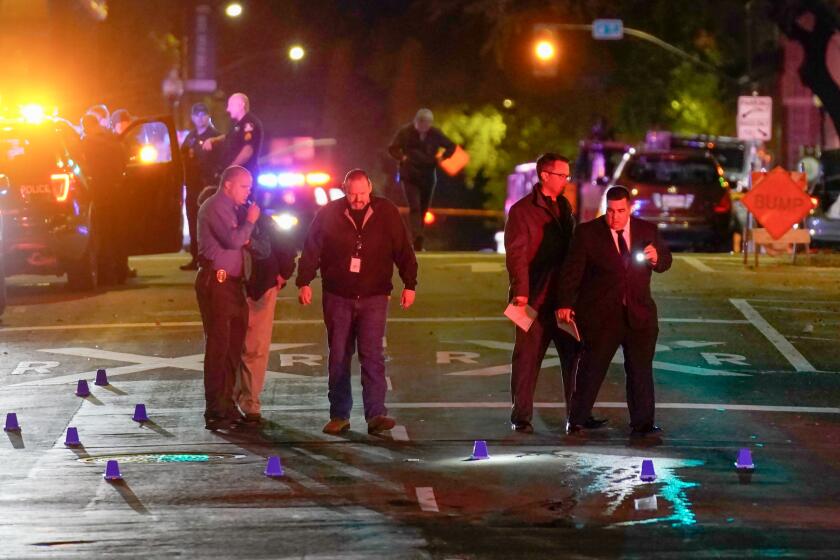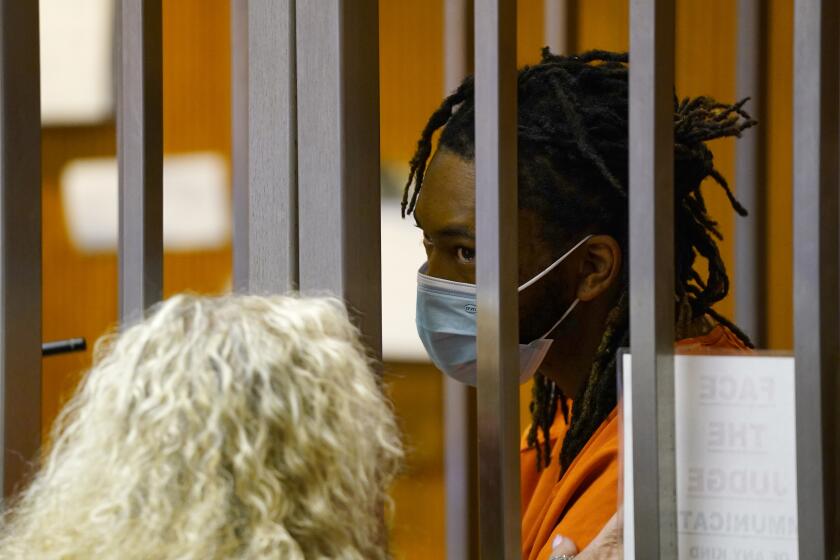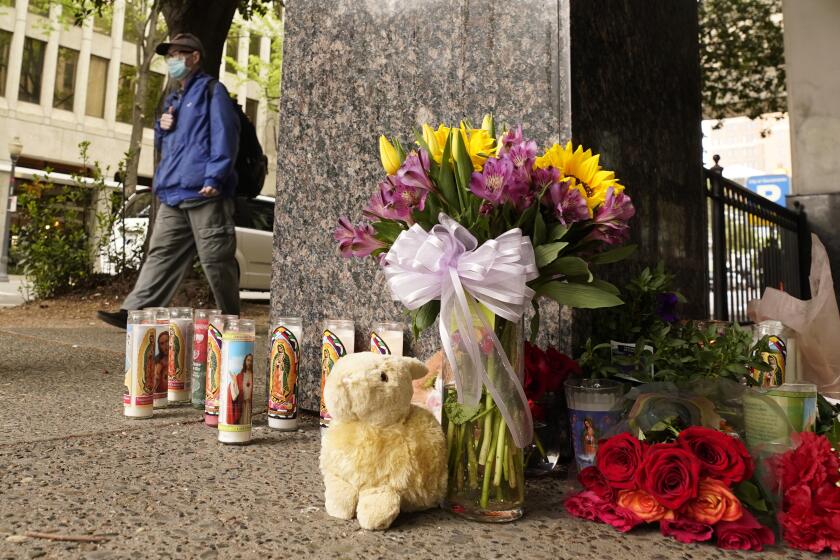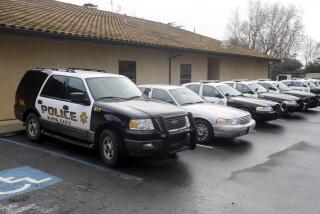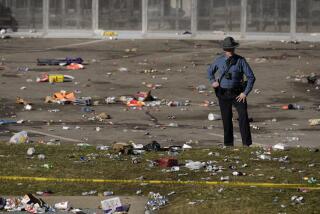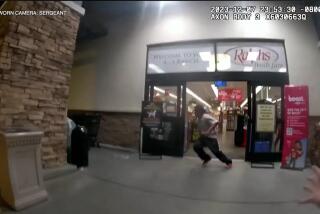Homicide detectives face huge challenges on Sacramento shooting. Here’s what we know
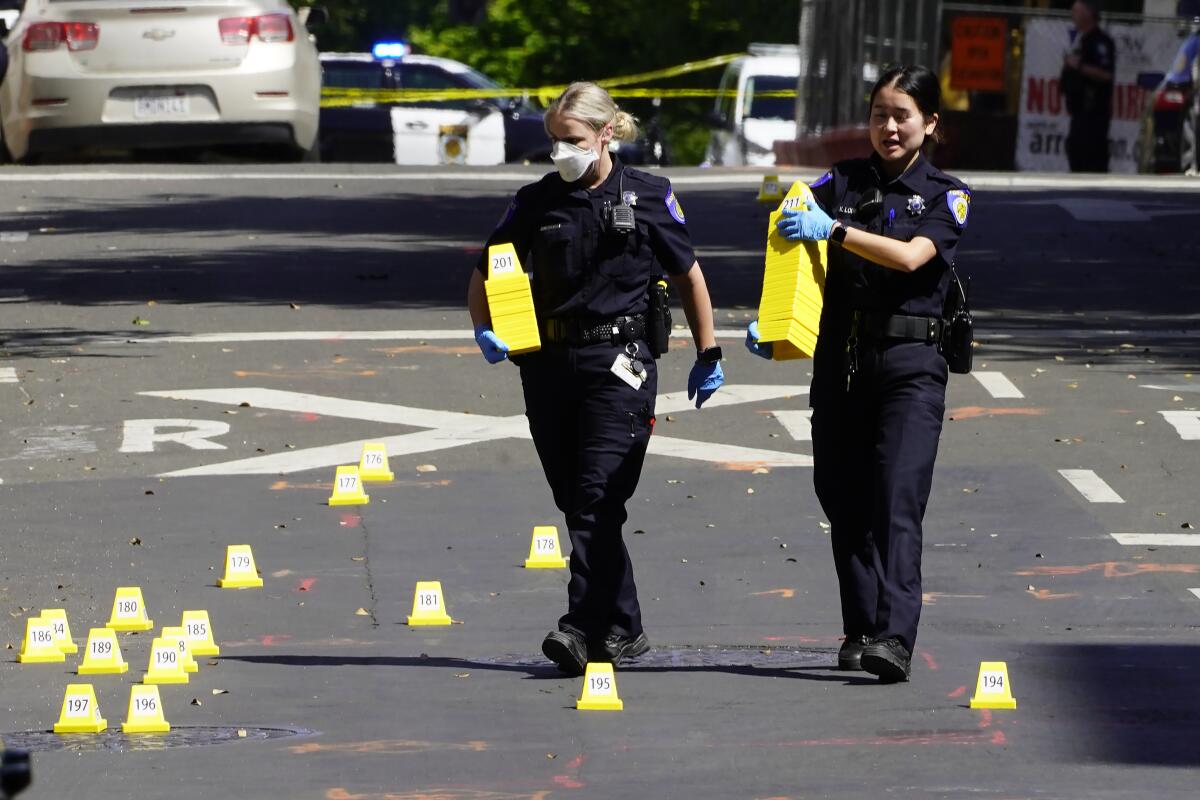
SACRAMENTO — After naming and securing two suspects, Sacramento police announced Tuesday they were looking for a third person thought to be involved in the capital city’s worst gun violence ever — a shooting that killed six and injured 12 people early last week.
Despite those developments, authorities face a monumental task in resolving this case — filing charges and prosecuting those responsible. Here’s why:
The crime scene is vast, and complicated
There were actually three different crime scenes, a block from California’s Capitol, spread out over 100 yards. When police arrived in the early hours of April 3, they found six bodies and twice as many injured people amid a dispersed crowd of late-night revelers. At least three buildings and three vehicles were hit by the spray of bullets.
Evidence technicians and detectives set out more than 250 evidence markers and documented at least 100 shelling cases at the scene.
As part of their investigation, homicide detectives must re-create what happened, down to the shots fired, who was firing them and which shooters had homicidal intent, as opposed to defending themselves.
“The re-creation of this crime scene is a massive task for any police department — it isn’t one crime scene really but several for each of the victims,” said Ed Obayashi, a Northern California sheriff’s deputy and force expert who teaches investigators how to build such cases.
Only one gun was recovered at the scene
According to Sacramento police, one gun was recovered at the scene of the shooting — others were apparently removed before officers arrived. The gun recovered was a stolen weapon converted with a so-called auto-sear or switch to make it a fully automatic weapon, police said.
During the execution of search warrants, police said they were also able to recover “at least one handgun.” It is not clear if that gun was used in the shooting, or how many other weapons have yet to be recovered. Police said that “at least five shooters fired guns during the shooting,” suggesting that more weapons are at large.
Recovering such weapons is important. It helps investigators re-create the crime scene, and match recovered bullets to guns, victims and suspects.
Obayashi suspects some weapons will never be recovered. “The guns are buried somewhere,” he said. That adds some hurdles to piecing together the crime scene, but not impossible ones, he added.
Sacramento massacre shows rising dangers of handguns converted into automatic weapons
One tool for investigators: nearly 200 videos and other evidence from the incident that can help them piece together what happened.
Billy Hayes, who led the Los Angeles Police Department Robbery Homicide Division for more than a decade before retiring, said not having all the guns is a hindrance, but given the shell casings, police should be able to put together a solid analysis.
“It is a matter of breaking it all down, one piece at a time,” he said. “Follow the evidence and it will lead to the killers.”
At least one alleged shooter is still at large
Sacramento police on Tuesday asked for the public’s help in tracking down one suspect, Mtula Payton, 27, whom they named as being involved in the shooting.
“Payton’s current whereabouts are unknown at this time,” police said in a news release. “Detectives have made multiple attempts to locate and arrest him while exhausting all leads.”
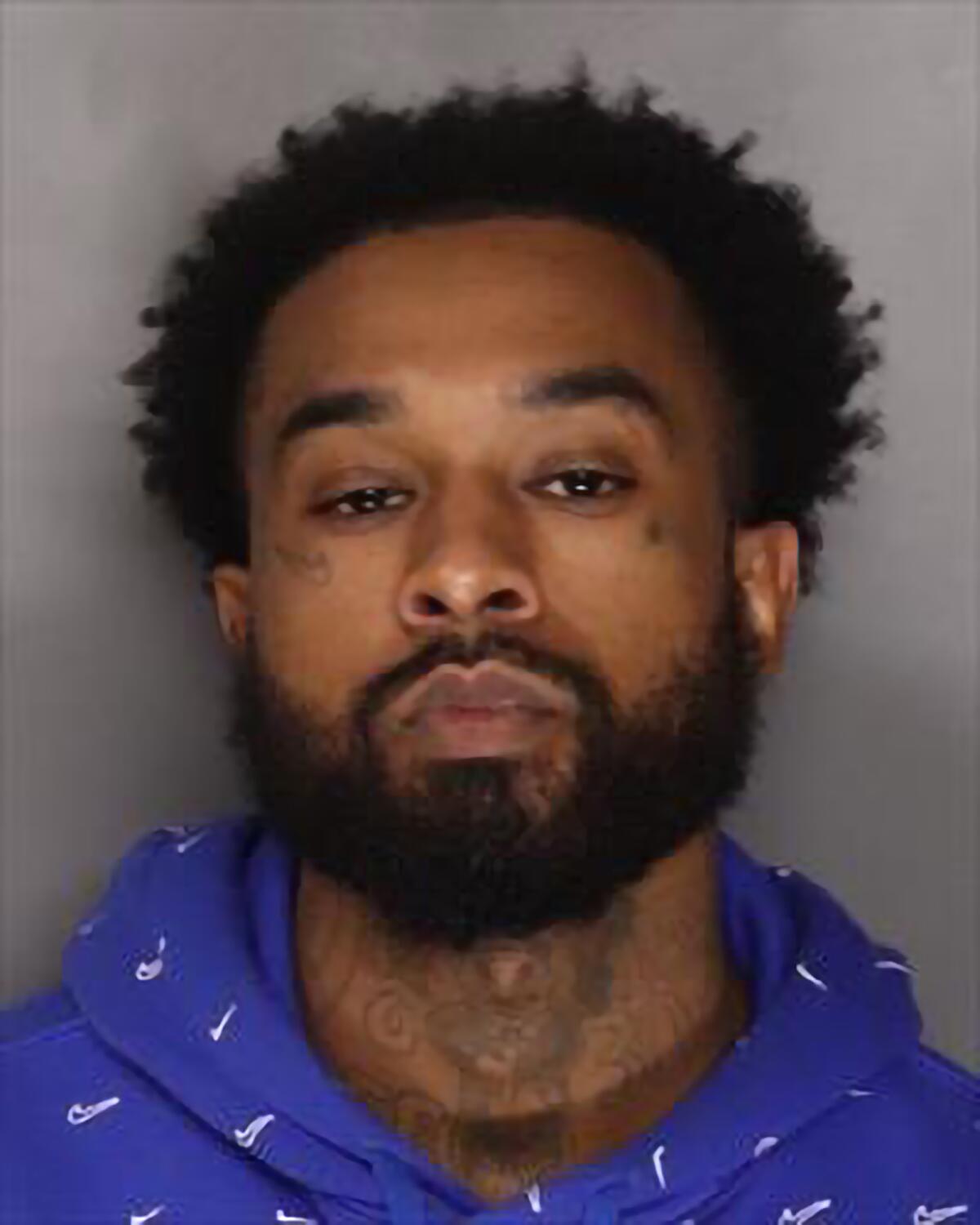
The decision to make public the fugitive’s name, and also share his image, likely means investigators have exhausted the quiet approach of using street sources to find the suspect, outside sources told The Times.
Police sought to put a positive spin on their progress.
“The investigation has moved very quickly in this first week,” Sacramento Police Chief Kathy Lester said in the news release. The probe, she added, “will continue until we can present prosecutors and the public with a complete picture of this terrible crime.”
Witnesses reluctant to come forward?
As police began to investigate, they quickly concluded a key cause of the shootout. “It is increasingly clear that gang violence is at the center of this tragedy,” police said in an April 6 statement.
Police did not name the gangs, but sources say members of Sacramento’s Crips and Bloods were involved.
It is not known if some of the shooting victims — both those dead and injured — had affiliations with these groups, but the implication of gang involvement is still significant.
Sacramento police say there were at least five shooters but are not providing details if any suspects are still at large.
Eye witnesses may be reluctant to share what they saw, for fear of gang retribution. Distrust of police is widespread in Sacramento and other cities, adding to the challenge of finding witnesses.
Just the sheer number of people involved makes it a tough investigation, said former Los Angeles Dist. Atty. Steve Cooley.
“This is likely one of the most complex cases to put together in a long time in terms of a deadly shooting because there are so many perpetrators,” he said. “It is incredibly complicated with videos static and handheld, ballistics spread over acres and the statements from people under fire.”
He said some shooters are undoubtedly going to assert some form of self-defense, a factor prosecutors will have to grapple with.
No named suspects yet charged
Police have named Payton, Smiley Martin and his brother, Dandrae Martin, as being involved in the shooting. Yet neither Smiley Martin nor his brother — who has been arrested and jailed — have been formally charged in connection with the shooting. Nor has Payton, who, before the massacre, was already wanted on multiple felony warrants, including domestic violence and gun charges.
Smiley Martin remains hospitalized with injuries from the shooting. Once his medical care has been completed, “he will be booked at the Sacramento County Main Jail for possession of a firearm by a prohibited person and possession of a machine gun,” police said April 5.
Adding to the mystery: When Dandrae Martin appeared in court last week, he was not charged with murder, or even with assault with a firearm, a crime he was arrested for, but only for being a felon in possession of a gun.
Abuse of women often leads perpetrators to engage in gun violence. The link is strong, but our will to stop abusers is not.
Legal experts say they are not surprised at the lack of charges, given this shootout was recent.
“There is a tremendous amount of investigation has to go on. Hundreds of videos have to be reviewed,” said Cooley. “There are potential people who could be witnesses and/or there are those involved. They have to be unpacked before anyone can be charged. In due course, you will see murder and attempted murder charges.”
Former L.A. County prosecutor Alan Jackson agrees. Prosecutors, he said, will need to present jurors with a narrative of deadly events, showing who did what and when.
That takes time, he said. It can’t be done until police and prosecutors have gathered “every single piece of evidence that you possibly can to make the case of filing bulletproof.”
Times staff writers Anita Chabria in Sacramento and Stuart Leavenworth in Berkeley contributed to this report.
More to Read
Sign up for Essential California
The most important California stories and recommendations in your inbox every morning.
You may occasionally receive promotional content from the Los Angeles Times.
